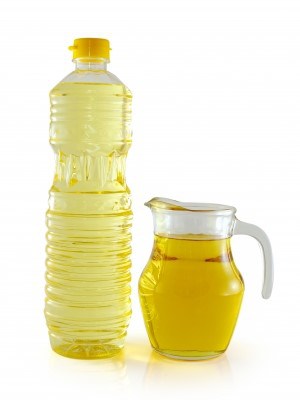Do you understand the various terms referring to fats when reading your own blood results? We would like to share some knowledge of various types of fats in our body and its functions.
Fats:
Group of compounds made of glycerol and fatty acids. Fat is one of the macronutrient that provide energy to our body. Fat is part of the calorie balance equation, thus play a role in body weight. Compared to carbohydrates and proteins which provide 4 calories per gram, fats are concentrated energy source by supplying 9 calories per gram. However, fat is not the preferred fuel source. Fat helps to provide texture and adds satiety in all kinds of foods.
Adipose tissue:
Scientific term for body fat. Adipose tissue is primarily located beneath the skin and found around internal organs. When we need an extra energy supply, the body can draw on this stored fat.
Dietary fat:
Fats found in food (from plants and animals).
Lipid:
Scientific term that refers to all fats, cholesterol and other fat-like substances. Lipid is the important constituent for the structure of cells.
Lipoproteins:
Lipoproteins are molecules made of proteins and fat. Lipoproteins carry cholesterol and similar substances in the bloodstream.
Cholesterol:
Cholesterol is a waxy substance found in foods of animal origin or synthesis by liver.
Blood (serum) cholesterol:
Cholesterol that travels in the bloodstream. Total cholesterol in our blood test report is calculated based on HDLs, LDLs and triglycerides level in our body.
Dietary cholesterol:
Cholesterol in food that is found only in animal origin. Plants origin do not contain any dietary cholesterol.
HDL (“good”) blood cholesterol:
Cholesterol carried by high-density lipoproteins (HDLs) in bloodstream. HDLs help remove blood lipids from arteries to liver, lipids will break down in liver and excreted. People with high blood triglycerides, genetic factors, type 2 diabetes, consuming certain medications and lifestyle habits such as smoking, being overweight and being sedentary can all result in lower HDLs. Food do not contain HDLs.
LDL (“bad”) blood cholesterol:
Cholesterol carried by low-density lipoproteins (LDLs) in bloodstream and circulate to body cells where they may be used. LDLs contributes to plaque, a thick and hard deposit that can clog arteries. If a clot forms and blocks a narrowed artery can result in heart attack or stroke. A diet high in saturated and trans fats raises LDLs.
Triglycerides:
Excess energy from our diet will be stored in the form of triglycerides in our body. Triglycerides act like saturated fat and can trigger the liver to synthesis cholesterol. People with diet high in carbohydrates, being overweight, physical inactivity, cigarette smoking, excess alcohol intake, underlying diseases or genetic disorder can raises triglyceride level.
Fatty acids:
Basic units of fat molecules with a chain of uneven number of carbon, hydrogen and oxygen.
Fatty acids are usually derived from triglycerides or phospholipids (major component of cell membranes). Each of fatty acids has its own unique physiological effect in the human body.
Monounsaturated fatty acids (MUFAs)*:
MUFAs are fat molecules that have one unsaturated carbon bond (double bond) in the molecule. Foods high in MUFAs include plant based liquid oils e.g. olive oil, canola oil, peanut oil, safflower oil and sesame oil.
Polyunsaturated fatty acids (PUFAs)*:
PUFAs are fat molecules that have more than one unsaturated carbon bond (double bond) in the molecule. Foods high in PUFAs include plant based liquid oils (soy bean oil, corn oil and sunflower oil) and fatty fish.
* Both MUFAs and PUFAs lower LDLs level in blood and reduce risk in developing heart disease.
Saturated fatty acids (SFAs):
SFAs are fat molecules that are saturated with hydrogen molecule (no double bond). SFAs occur naturally and mainly from animal source. Foods high in SFAs include meat, dairy products, baked goods and fried foods. Some plant based oils contain primarily SFAs e.g. palm kernel oil. SFAs (except **stearic acid) increase total cholesterol and LDLs in blood.
**Stearic acid: a type of saturated fatty acid that appears to have a neutral effect, neither raising nor lowering blood cholesterol levels.

Hydrogenated fats:
Hydrogenation is the chemical process to turn liquid vegetable oil into solid fat. The extent of hydrogenation determines the quantity of trans fats. A product shown on a food label’s ingredient listed as ‘hydrogenated’ is fully saturated and has no trans fats (trans-fat free).
Trans fatty acids:
There are two types of trans fats found in foods: naturally-occurring and artificial trans-fat. Naturally occurring trans fats are produced in some animals and foods made from these animals. Artificial trans fats are created when there is partially hydrogenated process (hydrogen add to liquid vegetables oils to become solid fat). Most trans fatty acids in the diet come from partially hydrogenated fats. Trans-fats give foods a desirable taste and texture. Trans-fat raise LDLs and lower HDLs level. Look for labelling term on trans-fat to identify it.
Reference from: American Heart Association
Photo from: Freedigitalphotos.net
Share:
Was this article helpful?
Share:
Was this article helpful?
Health Packages
Elevate your health with tailored health packages at Columbia Asia Hospital. Take charge of your health journey today.

